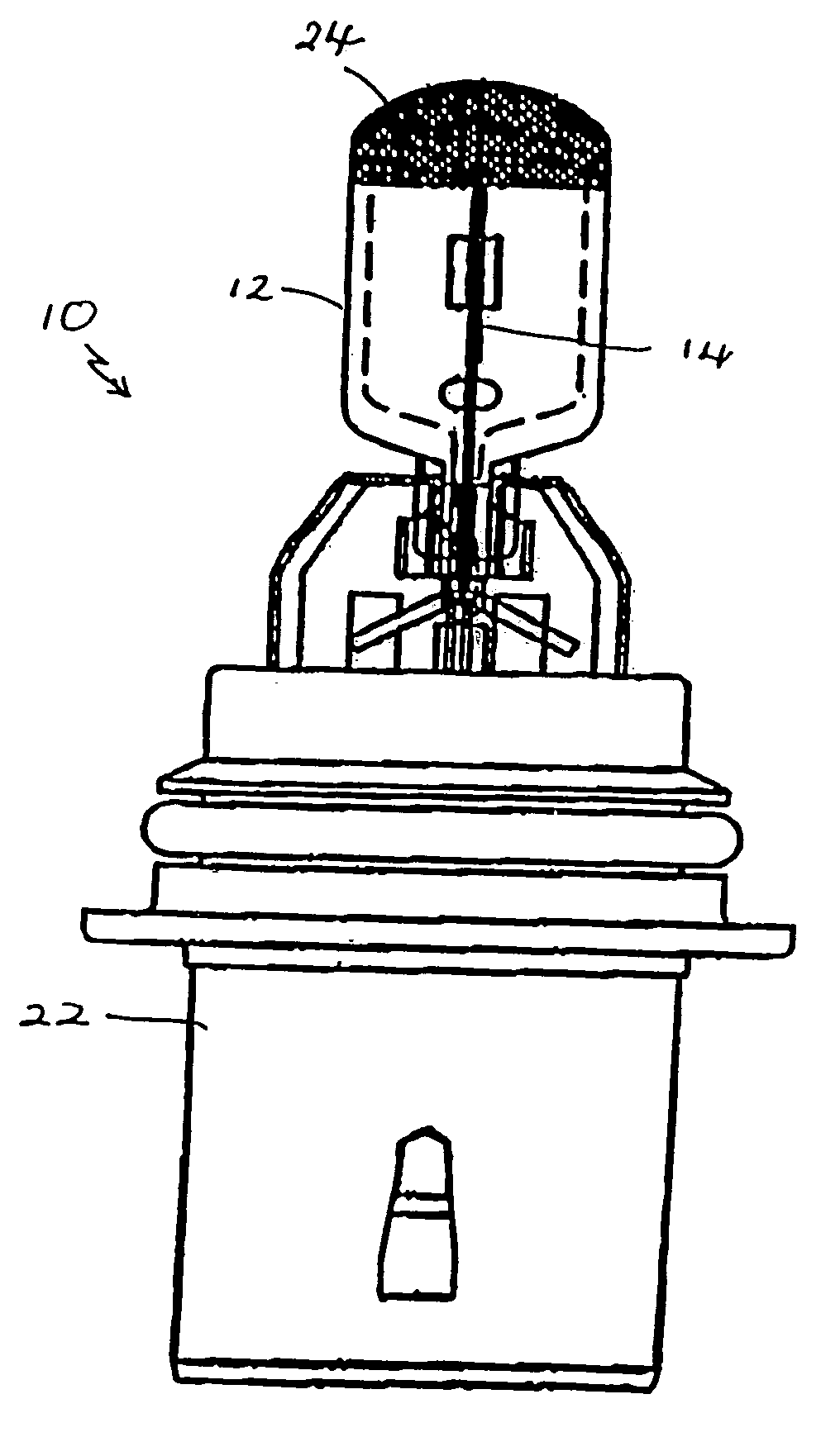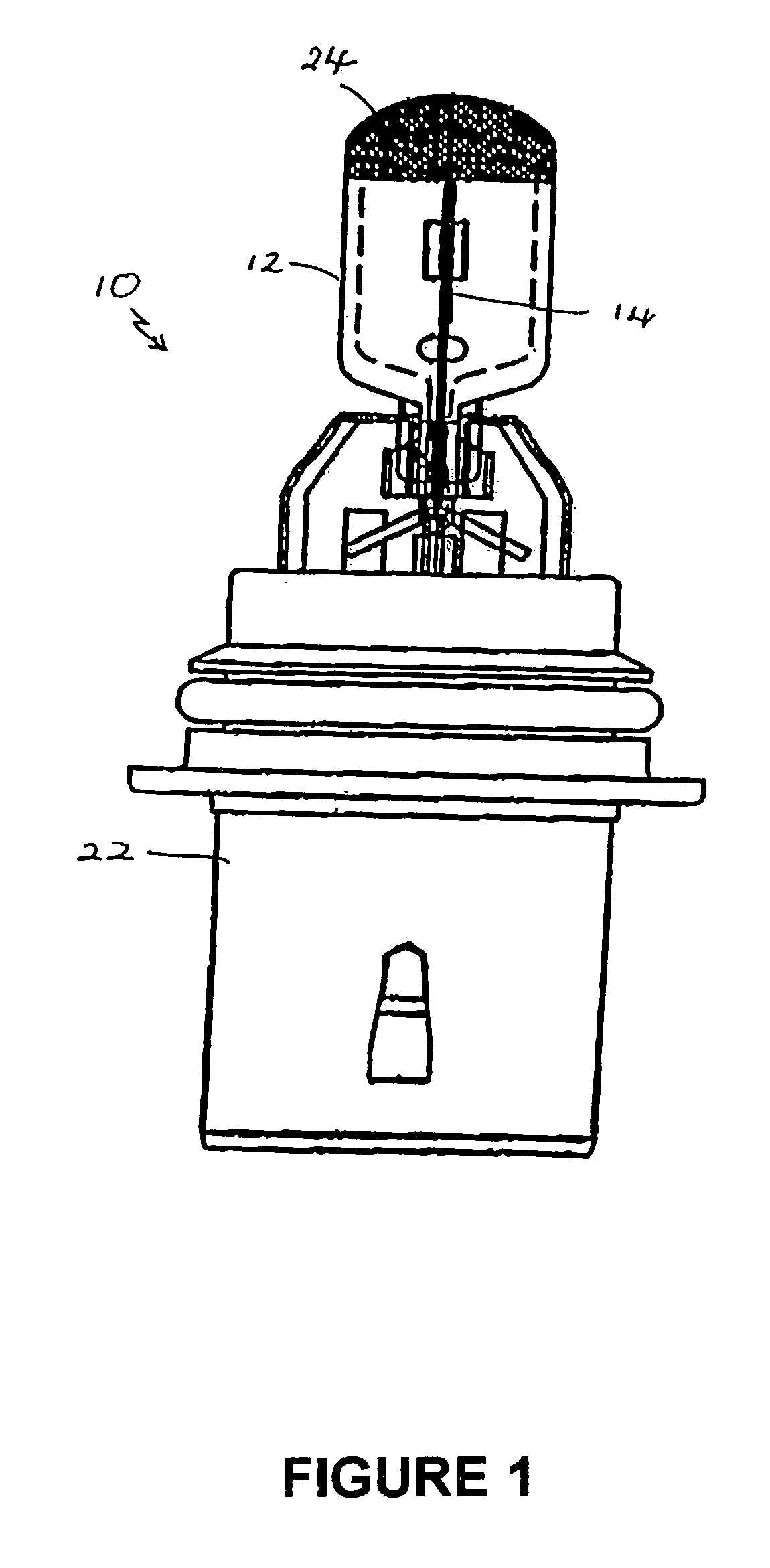Tungsten halogen lamp with halogen-containing compound and silicon-containing compound
a technology of silicon-containing compound and tungsten halogen lamp, which is applied in the field of lampshelves, can solve the problems of incandescent lamp excess oxygen, incandescent lamp premature failure, water vapor is particularly harmful, etc., and achieves good lumen maintenance and increased lamp lifetime.
- Summary
- Abstract
- Description
- Claims
- Application Information
AI Technical Summary
Benefits of technology
Problems solved by technology
Method used
Image
Examples
example
[0034]Dual filament, high brightness, single-ended tungsten halogen lamps (˜12 volt) of the type illustrated in FIGS. 1 and 2 with a first filament 14 running at 55 watts and a second filament 15 running at 65 wafts were prepared. The lamps included high temperature aluminosilicate glass envelopes and were prepared at various silicon to halogen atomic ratios from 0 to 0.5 by filling the lamp with a fill gas consisting of a mixture of SiH4 and dibromethane in an inert gas (xenon), prior to sealing the lamp. Lamps were prepared with the following formulations, to a cold fill pressure of 7.5 atm.:
[0035]
Mole % CH2Br2Mole % SiH4Mole % N2Mole % Xenon0.050.0 2.5Balance0.050.032.5Balance0.040.032.5Balance0.040.042.5Balance
[0036]The lumens per watt at time T=0, i.e., for fresh lamps, was determined. The lumens per watt at approximately 50% life (after about 76–100 hours, depending on the average lifetime) was determined for each of the lamps. Lamp life is defined as the time to burn-out. The...
PUM
 Login to View More
Login to View More Abstract
Description
Claims
Application Information
 Login to View More
Login to View More - R&D
- Intellectual Property
- Life Sciences
- Materials
- Tech Scout
- Unparalleled Data Quality
- Higher Quality Content
- 60% Fewer Hallucinations
Browse by: Latest US Patents, China's latest patents, Technical Efficacy Thesaurus, Application Domain, Technology Topic, Popular Technical Reports.
© 2025 PatSnap. All rights reserved.Legal|Privacy policy|Modern Slavery Act Transparency Statement|Sitemap|About US| Contact US: help@patsnap.com



